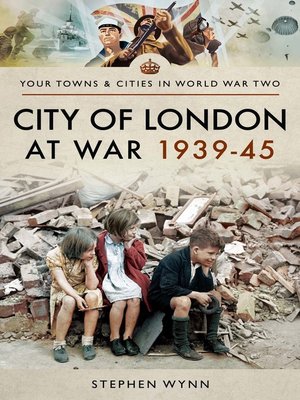
Sign up to save your library
With an OverDrive account, you can save your favorite libraries for at-a-glance information about availability. Find out more about OverDrive accounts.
Find this title in Libby, the library reading app by OverDrive.



Search for a digital library with this title
Title found at these libraries:
| Loading... |
A photo-filled history of how London's historic business district endured the Blitz during World War II, and emerged to thrive once again.
The City of London was an obvious target for German bombers during the Second World War. What better way for Nazi Germany to spread fear and panic amongst the British people than by attacking their central business district? Although it wasn't densely populated, there were still enough people working there during the day for attacks on it to take their toll. The city's ancient and iconic buildings also bore the brunt of the German bombs, including churches designed by Sir Christopher Wren after the Great Fire in 1666.
The book looks at the effects of war on the City of London, including the damage caused by the eight months of the Blitz between September 1940 and May 1941. The most devastating of the raids took place on December 29, 1940, with both incendiary and explosive bombs causing a firestorm so intense it was known as the Second Great Fire of London.
It also looks at the bravery of the staff at St Bart's Hospital, which was one of the medical facilities that remained open during the course of the war. Other stories include the sterling work carried out by the City's civilian population and the voluntary roles that they performed to help keep the city safe, including the Home Guard and the Fire Watchers, who spent their nights on the city's rooftops looking out for incendiary devices dropped by the Luftwaffe. Ultimately, despite the damage to its buildings and population, by the end of the war the City of London was able to rise, like a phoenix, from the flames of destruction, ready to become the vibrant and flourishing borough that it is today.
The City of London was an obvious target for German bombers during the Second World War. What better way for Nazi Germany to spread fear and panic amongst the British people than by attacking their central business district? Although it wasn't densely populated, there were still enough people working there during the day for attacks on it to take their toll. The city's ancient and iconic buildings also bore the brunt of the German bombs, including churches designed by Sir Christopher Wren after the Great Fire in 1666.
The book looks at the effects of war on the City of London, including the damage caused by the eight months of the Blitz between September 1940 and May 1941. The most devastating of the raids took place on December 29, 1940, with both incendiary and explosive bombs causing a firestorm so intense it was known as the Second Great Fire of London.
It also looks at the bravery of the staff at St Bart's Hospital, which was one of the medical facilities that remained open during the course of the war. Other stories include the sterling work carried out by the City's civilian population and the voluntary roles that they performed to help keep the city safe, including the Home Guard and the Fire Watchers, who spent their nights on the city's rooftops looking out for incendiary devices dropped by the Luftwaffe. Ultimately, despite the damage to its buildings and population, by the end of the war the City of London was able to rise, like a phoenix, from the flames of destruction, ready to become the vibrant and flourishing borough that it is today.






